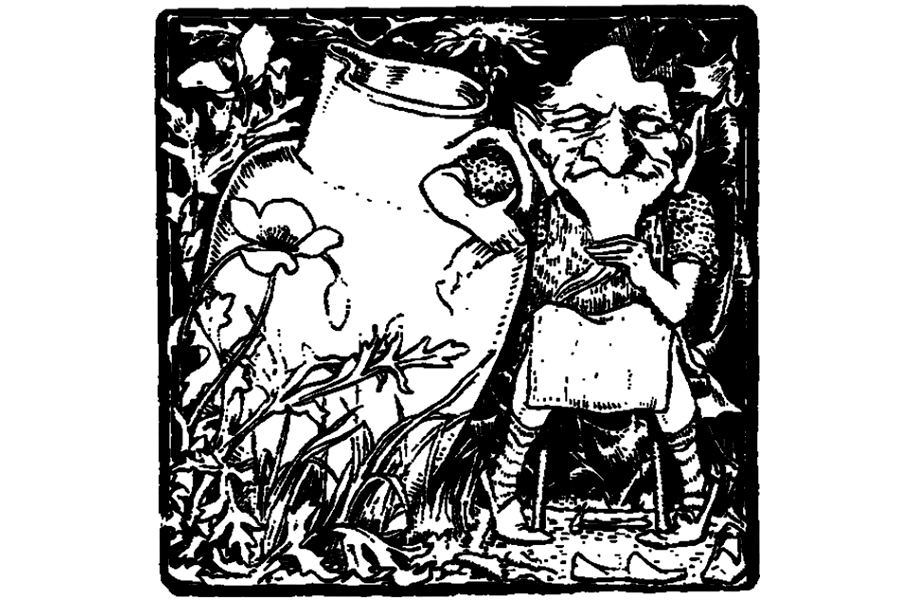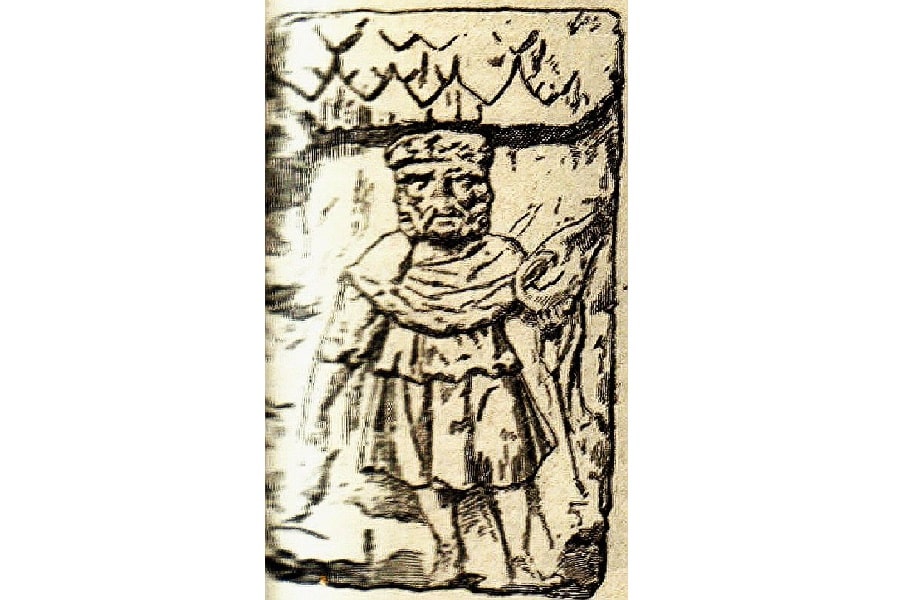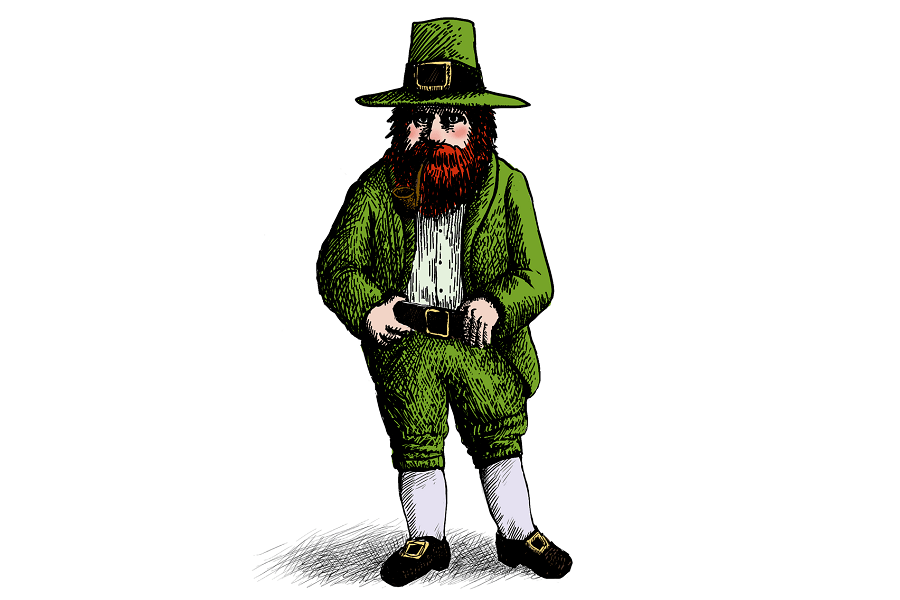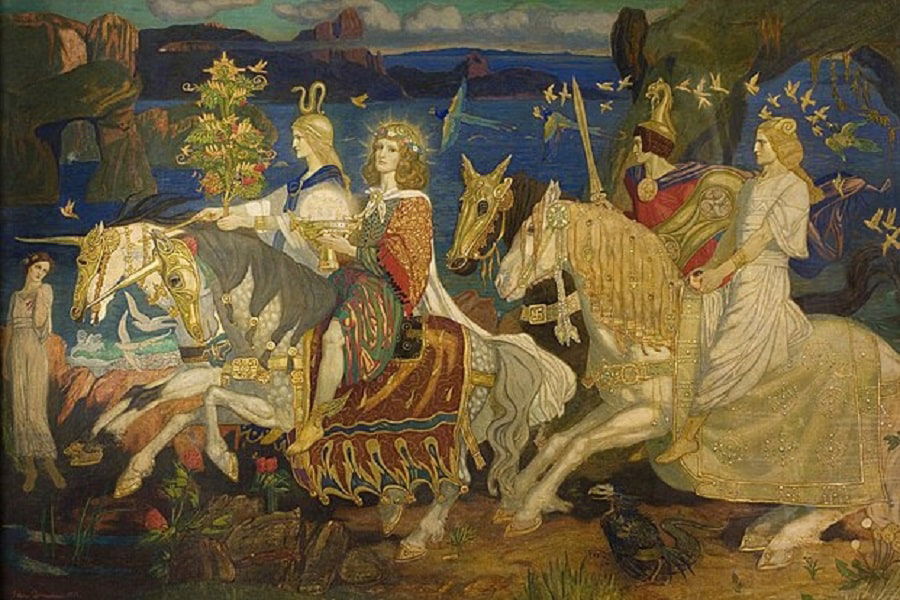A leprechaun is a mythical creature in Irish folklore, typically depicted as a tiny, mischievous old man dressed in green with a red beard and a hat.
According to legend, leprechauns are cobblers by trade and are known for their love of gold and their skill in making shoes. They are also said to be very secretive and elusive, often leading people on wild goose chases in search of their treasure.
In Irish mythology, it is believed that if you catch a leprechaun, he must grant you three wishes in exchange for his release. However, leprechauns are notoriously difficult to catch, as they are quick and clever.
The image of the leprechaun has become a popular symbol of Ireland and is often associated with St. Patrick’s Day celebrations.
Table of Contents
What is a Leprechaun?

Usually classed as some kind of a fairy, leprechauns are small supernatural creatures that are specific to Irish folklore. Depicted as little bearded men, they might play the role of mischievous sprites or helpful shoemakers, depending on the story. They are strongly associated with gold and wealth and are meant to be a test of a human’s greed. In the modern world, the leprechaun has become an enduring symbol of Ireland.
What Does ‘Leprechaun’ Mean?
The English word ‘leprechaun’ is derived from the middle Irish ‘luchrapán’ or ‘lupraccán.’ These in turn were descended from the old Irish ‘luchorpán’ or ‘lupracán.’ The most common meaning given for the name is a compound of the root words ‘lú’ or ‘laghu’ and ‘corp.’ ‘Lú’ or ‘laghu’ is from the Greek word meaning ‘small’ and ‘corp’ is from the Latin ‘corpus,’ which means ‘body.’
Another more recent theory suggests that the word is derived from the Luperci and the Roman pastoral festival Lupercalia.
Finally, local folklore theorizes that the name may be derived from the words ‘leith’ meaning ‘half’ and ‘bróg’ meaning ‘brogue.’ Since a local alternative spelling for leprechaun is leithbrágan, this may be a reference to depictions of the leprechaun working on a single shoe.
Different Names for Leprechauns
Different parts of Ireland have different names for the creature. In Connacht, the original name for the leprechaun was lúracán, while in Ulster it was luchramán. In Munster, it was known as lurgadán and in Leinster as luprachán. All of these come from the Middle Irish words for ‘small body,’ which is the most obvious meaning behind the name.
Stooping Lugh
There is another Irish tale about the origins of ‘leprechaun.’ The Celtic god Lugh may have eventually transformed from his powerful stature to a form popularly called Lugh-chromain. Meaning ‘stooping Lugh,’ the god was supposed to have disappeared into the underground world of the Celtic sidhe.
This diminutive form of the once powerful king may have evolved into the leprechaun that we know today, the fairy creature that is a half craftsman and half mischievous spirit. Since all the original mythological creatures were delegated to the underworld with the advent of Christianity, it explains the transformation of the god.

READ MORE: 18 Celtic Gods and Goddesses: Ancient Celtic Pantheon
Appearance
While the modern perception of the leprechaun is a mischievous looking little being dressed in a green suit and top hat, the fairy legends have a very different portrayal of them. Leprechauns traditionally took the form of an old man with a white or red beard. They were no larger than a child, wore hats, and were usually depicted sitting on toadstools. They had old, wrinkled faces.
There is a more modern interpretation of the leprechaun – a creature whose jolly round face rivals the bright green of his clothing. The modern leprechaun is usually smooth-shaven or has a red beard to contrast his green clothing.
Clothing
In Irish mythology, fairies were usually depicted wearing a red or green coat. The older variations of the leprechaun would usually wear red jackets. The Irish poet Yeats had an explanation for this. According to him, the solitary fairies like the leprechaun traditionally wore red while the fairies who lived in groups wore green.
The leprechaun’s jacket had seven rows of buttons. Each row, in turn, had seven buttons. In certain parts of the country, the leprechaun wore a tricorn hat or cocked hat. The outfit also varied depending on the region the myth was from. The northern leprechauns were dressed in military coats and the leprechauns from the wild west coast in warm frieze jackets. The Tipperary Leprechaun appears in an antique slashed jacket while the leprechauns of Monaghan (also called cluricaune) wore a swallow-tailed evening coat. But they were usually all red.
The later interpretation that leprechauns wear green may be because green was a traditional national color of Ireland from as early as the 1600s. The dress style of the leprechaun also changed to reflect the fashion of Irish immigrants coming to the United States.
In tales and portrayals where the leprechaun is making shoes, he might also be depicted wearing a leather apron over his clothes.

Characteristics
Leprechauns are thought to be tiny, incredibly agile goblin or fairy figures. They are typically solitary creatures and the guardians of hidden treasure. This is why they are so often depicted with pots of gold coins in the old tales. The traditional tales of leprechauns talk of stern, gloomy, bad-tempered old men. They are said to be frequently quarrelsome and foul-mouthed and their purpose is to test human beings on their greediness. They are also often associated with craftsmanship.
The more modern interpretation of a leprechaun as a cheerful little soul sitting on a toadstool is not authentic to Irish folktales. That is a more universal European image that appeared due to the influence of fairy tales from the continent. This version of the leprechaun seems to enjoy playing practical jokes on human beings. While never as dangerous or malicious as some of the Irish fey, these leprechauns are only interested in making mischief for the sake of it.
Leprechauns are so often associated with gold and wealth that it almost comes as a shock that their exclusive career choice is to be cobblers. That doesn’t sound like a very lucrative profession if you think about it. However, firm believers in leprechauns go searching for them to see if they can retrieve the gold.
D. R. McAnally (Irish Wonders, 1888) says that this interpretation of leprechauns as professional cobblers is a false one. The fact is that the leprechaun only mends his own shoes very often since he runs about so much and wears them out.
No Female Leprechauns?
One interesting fact about leprechauns is that they are exclusively male. Irish folklore always depicts these creatures as bearded elves. If there are no women, where do baby leprechauns come from then, you might ask? There is no answer to this question. There aren’t any accounts of female leprechauns in history.
Myths and Legends
The origins of the leprechaun can be traced back to the Tuatha Dé Danann of Irish mythology. This may be because many believe that the origins of the leprechaun lie in the waning importance of the Irish mythical hero Lugh.

Origins
It has already been established that the name ‘leprechaun’ may have originated from Lugh. Since he was the god of craftsmanship, it makes sense that the faeries most associated with a craft like shoemaking are also associated with Lugh. Lugh was also known to play tricks when it suited him.
How he became diminutive, however, remains a fascinating question. Not all of the Celtic faeries, particularly the more aristocratic type, were small in stature. So why would the leprechauns be so tiny, if they were indeed a form of Lugh?
This suggests another origin story of the creatures. The other ancient source of inspiration for leprechauns is the water sprites of Celtic mythology. These tiny faerie creatures first appeared in Irish literature in the book “Adventure of Fergus son of Léti,” from the 8th century CE. They are called lúchoirp or luchorpáin in the book.
The story goes that the hero Fergus, King of Ulster, falls asleep on a beach. He wakes up to find that a number of water spirits have taken away his sword and are dragging him into the water. It is the water touching his feet that wakes up Fergus. Fergus frees himself and grabs three spirits. They promise to grant him three wishes in return for their freedom. One of the wishes grants Fergus the ability to swim and breathe underwater. This is the first mention of any variations of the leprechaun in Irish books.
READ MORE: Who Invented Water? History of the Water Molecule
The Clúracán & Far Darrig
There are other Irish faeries that can be linked with leprechauns. They are the Clúracán and Far Darrig. These may also have been other sources of inspiration that birthed the leprechaun.
The lupracánaig (Book of Invasions, 12th century CE) were terrible monsters who were also called clúracán (or cluricaune). They were also male spirits that were found in wider European mythology and were said to haunt cellars. They were depicted wearing red clothes of very fine quality and carrying purses filled with silver coins.
Solitary creatures, the clúracán loved smoking and drinking. This is why they dwelt in wine-filled cellars and scared away thieving servants. They were said to be very lazy. The clúracán shared some similarities with the brownie of Scottish Gaelic folklore, which lived in barns and did chores during the night. However, if angered, the brownie would break things and spill all the milk.
The far darrig, on the other hand, is an ugly fairy with a very wrinkled old face. In some regions, he is thought to be very tall. In other places, people believe he can change his size whenever he wishes. The far darrig too loves a practical joke. But unlike the leprechaun, he sometimes goes too far and the jokes become lethal. Thus, his reputation is eviler. The far darrig can, however, free someone trapped in faerie land if he wants to.
There were also the mouros of Celtic Galicia and other Celtic regions of Spain. These creatures were said to be the guardians of tombs and hidden treasure.
Thus, leprechauns are a kind of amalgamation of all of these creatures. They took aspects of these mythical beings and gradually became the most universally recognized Irish fairy.

Pot of Gold
The most common bit of Irish folklore about the leprechaun is about one sitting and repairing shoes with a little pot of gold or a pile of gold coins beside him. If the human is able to capture and keep his eye on the leprechaun at all times, they can take the gold coins.
However, there is a problem there. The wily leprechaun is very agile and nimble. He has a whole bag of tricks to distract the human. The leprechaun’s favorite trick to elude his captor is to play on his greed. In most of the stories, the leprechaun is able to hang on to his pot of gold. The human is left bemoaning their own stupidity on being fooled by the little creature.
Where do the leprechauns find the gold? The myths say that they find gold coins hidden in the ground. They then store them in a pot and hide them at the end of a rainbow. And why do they need the gold since they can’t spend it anyway? Well, the common interpretation is that the leprechauns are rogues who just want to trick human beings.
READ MORE: 11 Trickster Gods From Around The World
The Leprechaun in the Modern World
In the modern world, the leprechaun has become the mascot of Ireland in some sense. He is their most beloved symbol and his more unappealing tendencies have been softened away. Thus, from cereals and Notre Dame to Irish politics, you can’t escape the leprechaun.

Mascot
The leprechaun has captured the popular American imagination and become the official mascot of the Lucky Charms cereal. Called Lucky, the mascot looks nothing like what a leprechaun originally looked like. With a beaming smile and a cocked hat on his head, Lucky juggles a variety of charms and beguiles American children into buying the sweet breakfast treats.
At the University of Notre Dame, the Notre Dame Leprechaun is the official mascot of the Fighting Irish athletic teams. Even in politics, the Irish make use of leprechauns to talk about the more gimmicky aspects of tourism in Ireland.
Popular Culture
Several Celtic music groups have used the term leprechaun in their album titles or song titles. And even American music has made mention of the mythical creature in several genres, from heavy metal and punk rock to jazz.
A rather horrid and tasteless reference to leprechauns is the Warwick Davies horror slasher film. In the 1993 film “Leprechaun” and its five subsequent sequels, Davis played the role of a murderous leprechaun.
The 1968 film “Finian’s Rainbow” by Francis Ford Coppola, featuring Fred Astaire, was about an Irishman and his daughter who stole a leprechaun’s pot of gold and emigrated to the United States. It was nominated for several awards but did not win any.
Paul Krugman, the Nobel Prize-winning economist, came up with the term ‘leprechaun economics’ which refers to unsound or distorted economic data.
An Enduring Legacy
Leprechauns, whether dressed in a red or green coat, have become a very important symbol of Ireland. In the USA, St. Patrick’s Day cannot be celebrated without the frequent and repeated associations with leprechauns, the color green, or shamrocks.
Leprechauns became so dominant over all other kinds of fairies and mythical creatures in the public imagination. After the medieval era, modern Irish books like T. Crofton Croker’s “Fairy Legends and Traditions of the South of Ireland” made sure that leprechauns eclipsed other goblins, elves, and fey creatures.